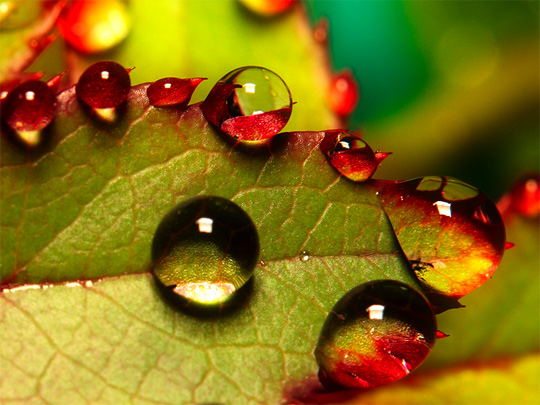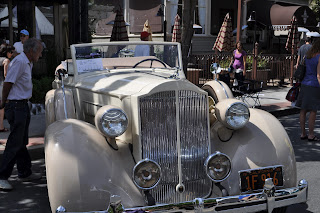Tuesday, December 18, 2012
Friday, December 14, 2012
Monday, December 10, 2012
Thursday, December 6, 2012
Tuesday, December 4, 2012
Friday, November 30, 2012
Definition of Macrophotography
Macrophotography, also known as macrography and photomacrography, is a very extreme close-up photography, usually of small onjects, in which the size of the subject in the photograph is greater than life size.
Wednesday, November 28, 2012
Thursday, November 15, 2012
Tuesday, November 6, 2012
Triptych Definition
Triptych
- A set of three compartnemts side by side, bearing pictures
- A hinged, three-leaved tablet written on in ancient times
Thursday, November 1, 2012
METADATA
Data about data. Metadata describes how and when and by whom a particular set of data was collected, and how the data is formatted. Metadata is essential for understanding information stored in data warehouses and has become increasingly important in XML-based Web applications. Descriptive METADATA is about individual instances of data and the application of that data.
Monday, October 29, 2012
Tuesday, October 23, 2012
Tuesday, October 16, 2012
Triangles of Exposure
Aperture
An adjustable opening in an optical instrument like camera which limits the light passing through a lens or onto a mirror; aperture is also the diameter of the objective of an instrument such as a telescope.
Shutter Speed
Shutter speed or exposure time is the length of time a camera’s shutter is open. The total exposure is proportional to the exposure time, or duration of light reaching the film or image sensor. The shutter speed helps distinguish between a blurry photo and a clear one.
ISO
ISO measures the sensitivity of the image sensor. The lower the number, the less sensitive your camera is to light and the finer the grain. Higher ISO settings are usually used in darker situations to get faster shutter speeds. 100 ISO is “normal” and will give shots with little grain. The ISO is directly linked to the aperture and shutter speed
Depth of Field
Depth of field refers to the range of distance that appears acceptably sharp. It varies depending on camera type, aperture and focusing distance, although print size and viewing distance can also influence our perception of depth of field.
Motion Blur
Motion blur is the apparent streaking of quickly moving objects in a still image or a sequence of images like a animation or movie. The method by which fast-moving objects appear blurred. Each frame in a film is an average sample taken over about half the time it takes to record the frame.
Noise and Light Sensitivity
Conventional film comes in different sensitivities for different purposes. The lower the sensitivity, the finer the grain, but more light is needed. The lower the sensitivity, the finer the grain, but more light is needed. This is really good outdoor photography, but for low-light conditions or action photography, more sensitive or “fast” film is used which is more “grainy.” When increasing the sensitivity, the output of sensor is amplified, so less light is needed. Unfortunately that also amplifies the unwanted noise. This creates more grainy pictures but because of different reasons. New technology are steadily reducing the noise levels at higher ISOs.
Thursday, October 4, 2012
Friday, September 28, 2012
Digital vs. Print Photography
Print Photography
Positive
|
Negatives
|
|
|
Digital Photography
Positives
|
Negatives
|
· Does not require chemicals to be used to develop the film
· The photographer can see if there needs to be an immediate retake of the picture
· Image is captured and focused by lens rather than by exposure to photographic film
· Digital photographs can be printed, displayed, stored, manipulated, archived, and transmitted using computer techniques without chemical processing
· Created by non-photographic equipment
· Digital images can be made by scanning conventional photographic images
|
· Computer equipment is not always the best and pictures can be lost if computer fails to work
· When working with a bigger canvas than the original photo, pixels may be lost and the picture may come out more grainy and blurry
· The equipment and programs needed to develop and download the photos is more expensive
· Photo quality is not as great compared to the quality of print photography
· A photographer needs to be tech genius and be well-known with the applications of the computer
|
Works Cited
Clark, Roger. "Film vs. Digital." Film vs. Digital. Ken Rockwell Foundation, n.d. Web. 03 Oct. 2012. <http://www.kenrockwell.com/tech/filmdig.htm>.
Galer, Mark. "Digital versus Film Photography." Wikipedia. Wikimedia Foundation, 25 Sept. 2012. Web. 02 Oct. 2012. <http://en.wikipedia.org/wiki/Digital_versus_film_photography>.
"Print Better Photos: Digital Photo Printing Tips and Ideas." HP-Hewlett-Packard Development Company. N.p., n.d. Web. 03 Oct. 2012. <http://www.hp.com/united-states/consumer/digital_photography/print_better_photos/index.html>.
Monday, September 24, 2012
Subscribe to:
Comments (Atom)


















































































